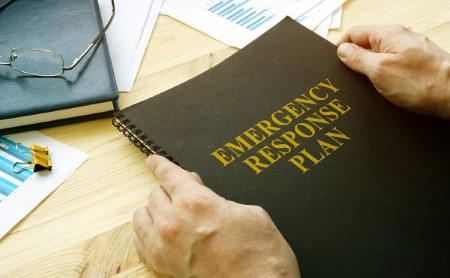The Importance of Preparing for Future Pandemics
July 13, 2021 | Carolyn McCoy
 George S. Patton famously said, “prepare for the unknown by studying how others in the past have coped with the unforeseeable and the unpredictable.” While military strength is not how public health approaches its work, there is still a lesson we can learn from that statement. As we enter COVID-19 recovery mode, we are in a moment of reflection on how we got here. However, lesson number one is that the COVID-19 pandemic was foreseeable and predictable. Yet, we found ourselves less than prepared as a country and global community. Fortunately, the best and brightest in the world are working toward improving our stance for the next, foreseeable, and predictable public health emergency, including ASTHO and its members.
George S. Patton famously said, “prepare for the unknown by studying how others in the past have coped with the unforeseeable and the unpredictable.” While military strength is not how public health approaches its work, there is still a lesson we can learn from that statement. As we enter COVID-19 recovery mode, we are in a moment of reflection on how we got here. However, lesson number one is that the COVID-19 pandemic was foreseeable and predictable. Yet, we found ourselves less than prepared as a country and global community. Fortunately, the best and brightest in the world are working toward improving our stance for the next, foreseeable, and predictable public health emergency, including ASTHO and its members.
Significant momentum continues toward improving U.S. public health preparedness. In late April, Senators Patty Murray and Richard Burr, chair and ranking member of the powerful Senate Committee on Health, Education, Labor, and Pensions (HELP), announced a bipartisan legislative effort to improve public health and medical preparedness and response programs. The Biden Administration has also taken actions to improve supply chains, mobilize a collective COVID-19 response, strengthen the domestic supply chain, support state and local jurisdictions with federal resources and personnel, and including a proposed $30 billion over the next four years in his American Jobs Plan to prevent the next pandemic.
ASTHO and its members are also continuing full steam ahead to improve public health preparedness. Even during some of the most challenging times of the COVID-19 response, ASTHO put forth detailed comments in response to a request from the previous Congress, a reflection of our ongoing commitment to learning and incorporating lessons learned. Similarly, ASTHO is excited to collaborate with the committee on this venture ahead. The committee is expected to release a bipartisan discussion draft of the legislation in August when ASTHO expects formal feedback. ASTHO’s comments on priorities that the committee could address in anticipated legislation are grounded in the critical need for a formal, organized, and expedient after-action review. A group of leading experts in virology, public health experts, clinicians, and former officials are framing how a potential National COVID-19 Commission would take shape and capture valuable lessons learned domestically and internationally that could potentially save lives in the future.
Broadly, ASTHO requested that Senators Murray and Burr’s legislation include a permanent fixture to investigate disaster responses modeled after the National Transportation Safety Board. Known issues that should be addressed in the present include public health infrastructure and workforce with a strong focus on sustainability, administrative preparedness, diversity, and flexibility in funding, to name a few. Data modernization is also underway but should also include essential preparedness indicators and communications channels.
Health equity is another area where we know we can make improvements. Weaving equity into public health preparedness activities deserves a redoubling of efforts and requires resources to back up the action. ASTHO advocates for sufficient investments in CDC’s Public Health Emergency Preparedness Program, the National Emerging Special Pathogens Training and Education Center, and the regional treatment facilities and proper inclusion of state, territorial, local, and tribal inclusion in medical countermeasure planning. Developing and distributing crisis standards of care ahead of any public health crisis is also necessary for a worst-case scenario. As we learn from the ongoing pandemic response, it’s also essential to understand what properly recovering from a disaster looks like. We know that a healthy community before a disaster can recover better than one struggling in the first place.
The pandemic made the value of governmental public health crystal clear. However, it also left a substantial mental health toll on state, tribal, local, and territorial public health workers that can and should be prevented in the future—fortifying our preparedness stance through legislation is literally putting this in writing. Confidence is 99% preparedness, but preparedness does not just happen.
ASTHO is hopeful that memories do not fade over the coming months and years when allocating precious resources and building a state-of-the-art public health enterprise that we can all be proud of. Our country must not forget the devastation the pandemic caused worldwide and how much of it could have been avoided. So really, when it comes to preparedness, what leads to public confidence, is actually what public health workers can accomplish every day—while having an eye toward planning for the worst.
Finally, let us not lose perspective of the broad spectrum of knowable and unknowable threats that our members respond to and prepare for, even during a pandemic. All-hazards preparedness with a strong emphasis on at-risk populations in a public health emergency should be our North Star.
ASTHO will continue monitoring legislation and advocating for an improved standing for public health in this country.